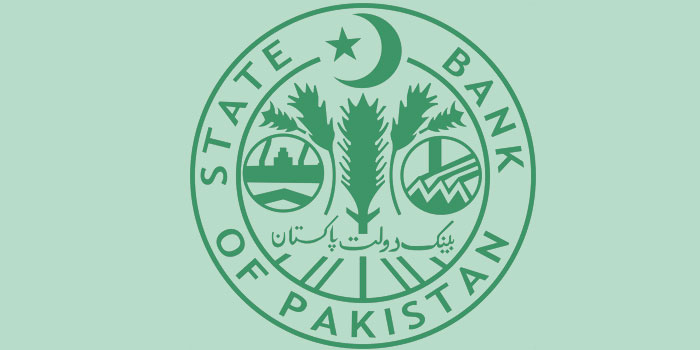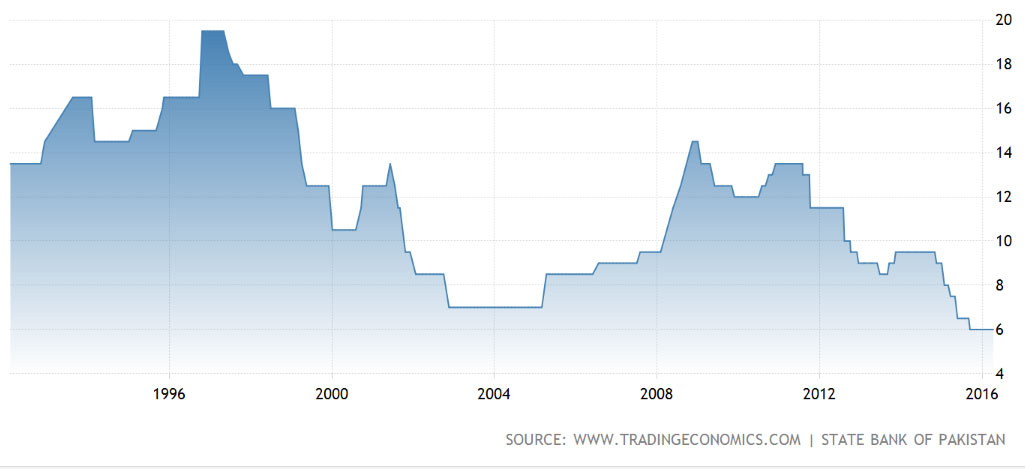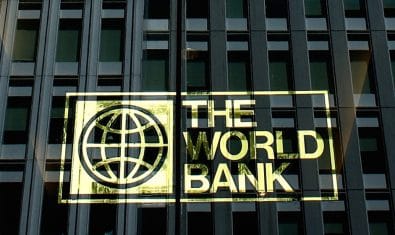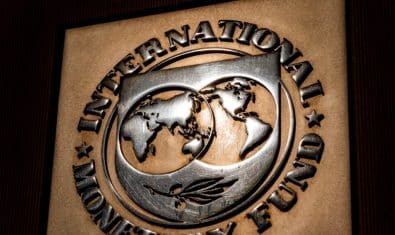State Bank of Pakistan reduced the policy rates slightly by 25 basis points to 5.75 percent with cautious approach after six months of maintaining status quo at 6 percent.
This decision was made by Monetary Policy Committee in line with consistent improvement in the macro-economic indicators coupled with controlled inflation rate in the past many months.
The previous level of policy at 6 percent was reportedly the lowest in 42-year, which has now gone below to even 5.75%.
For those who aren’t familiar, policy rates — or the interest rates — that banks offer are determined by State Bank of Pakistan. No bank can offer greater interest rate than the one defined by central bank for a particular time period.
New policy rates will be favorable for newer investments in existing and new businesses in different sectors including startups and SMEs as borrowing cost from commercial banks will further ease up.
The decline in the policy rates will slightly impact consumer financing as well, which would now be able to further attract the masses to avail financing for meeting individual requirement of houses, cars and various other equipment at lower than ever rates.
Not to mention, central bank will have keep an eye on commercial banks to make sure that they are passing on the impacts to the consumers.
Interest Rates in Pakistan (1992-2016)
On the flip side, the reduction of policy rates will also decline the saving rates and margins of the commercial banks through the earning of interest income at least for the next two months.
According to overview of economy upon which the decision for reducing the policy rate was made by Monetary Policy Committee, macroeconomic conditions continued to improve towards the end of FY16.
Headline CPI inflation, despite its continuous increase on Year-on-Year (YoY) basis, would remain below its FY16 annual average target of 6 percent.
Real GDP growth is set to exceed its FY15 outcome of 4.2 percent, while remaining below its target of 5.5 percent.
In addition to the seasonal impact of perishable food items and services, this increase owes to further waning of the base effect and second round impact of decline in oil prices.
Current account deficit is likely to shrink to the previous year’s level of around 1 percent of GDP and the expected surplus in balance of payments would be marginally less than the FY15 level. Foreign exchange reserves are still projected to maintain upward trajectory.
Steady workers’ remittances and low oil prices have helped contain the current account deficits at manageable levels, while multilateral and bilateral inflows have largely contributed to the surpluses in the financial account.
In the current fiscal year as well, favorable trends in these factors are expected to yield an overall surplus in the balance of payments with SBP’s foreign exchange reserves estimated to increase to over 4 months of import coverage; up from around 3 months at end-FY15.
Going forward, foreign direct investment is projected to increase as the work on projects under China Pakistan Economic Corridor have gained momentum. On the other hand, owing to some anticipated uptick in commodity prices along with improvements in domestic energy supplies exports receipts are likely to recover marginally.




























Moral of the story…… Dollar Up and PKR down.
People will be forced not to invest their savings in Banks now. Banks rely on these savings for their businesses. Eventually, there will be no big amounts our banks could offer for loan and as a result our banks will be brought out by international banks. A lose lose scenario for Pakistan.
On the other hand, people will start buying shops, houses and land to invest their amount. This will push the up the property prices and will eventually there will be a bubble burst. Soodi Nizam is always a loss loss scene :)